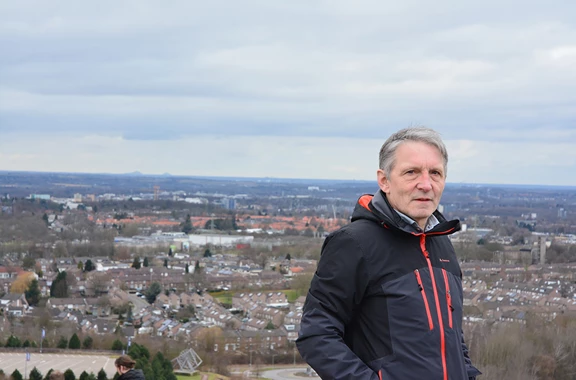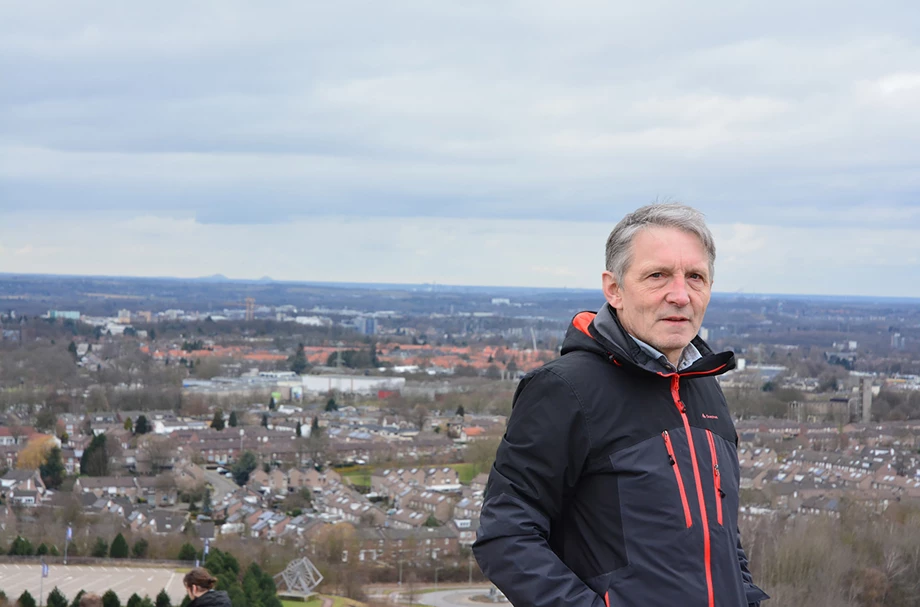


The last mine in Heerlen, the Netherlands, is called Oranje Nassau 1. It closed its gates in 1974. Jean Weijers, specialist Subsurface and Mining at the municipality of Heerlen, explains: 'Up to 1994, groundwater was still pumped out of the mine to prevent neighboring mines in Germany from being flooded. The mines were connected to each other to act as an escape route for each other. Millions of cubic meters of mine water are pumped out every year. We call it mine water, because it has a different composition than groundwater. It comes from the Carboniferous mining rock and is a lot saltier than groundwater. It also contains a very small amount of heavy metals. That is why you are not allowed to discharge it into surface water. In that sense you could say it's polluted water, but it's a natural compound.'
'In the past, the mine water was already monitored. Until 1994, the water levels remained at the same level. After 1994, when the German mines also closed and the pumps stopped, the water started to rise. The mine water has risen here in Heerlen from the deepest point, at 700 meters, to where it is now. In the beginning it went very fast but the higher it gets, the slower it rises. Currently, the mine water is rising on average almost one centimeter per day. The rising mine water also has an effect on the groundwater level, not so much on the groundwater quality. You could say that the salty mine water pushes the fresh groundwater up slightly. The mine water is contained in the carboniferous rock. Above that you have the deck area of about 100 meters thick. That deck area consists of all kinds of loose material such as clay, sand, gravel and limestone. This also contains the groundwater.'
Climate change is accompanied by a different precipitation regime. We want to understand the consequences of this for groundwater.

'We have to monitor changes in rising mine water and groundwater. These also influence the discharge of water to the streams. The municipality also wants to be able to monitor any contamination that may be present. Another reason to monitor is climate change. Climate change is accompanied by a different rainfall regime. In the future, we expect showers with a higher intensity. We want to understand the consequences of this for groundwater. Sewerage also plays a role. When maintaining sewerage, we need to know the dimensions and where the groundwater is, in order to determine in advance whether we need to pump or not. A fourth reason, certainly important for Heerlen, relates to energy. Mine water has been used since 2009 to heat and cool buildings, homes and offices. Moreover, as a municipality, we have a duty of care with regard to groundwater.'
'A few years ago, the groundwater monitoring network was critically examined. It turned out that a large part of the loggers no longer functioned. We decided to redesign the monitoring network. A request for quotation followed and Royal Eijkelkamp came out on top of all the companies contacted with regard to both price and product. The original plan was to replace only the defective loggers, but the offered Diver water level logger turned out to be cheaper than expected. We have chosen to use it to organize all points.'
'We have also concluded a five-year maintenance contract with Royal Eijkelkamp. We wanted to get rid of maintenance. This was stated in the tender, but for some suppliers this was a problem. They don't do that themselves. At Royal Eijkelkamp we had everything at once: the right material, the installation, maintenance, management and also access to the data. Moreover, we are very charmed by your way of data validation. We are not yet making the data accessible via telemetry, but we are seeing the benefits. After all, you don't have to make a round that often and if something is wrong you will see it immediately. However, we have not yet opted for it because of the cost aspect. We do think that telemetry will eventually be chosen in the future.'

Need advice choosing the right product for your application? Our specialist Sandra is happy to help.